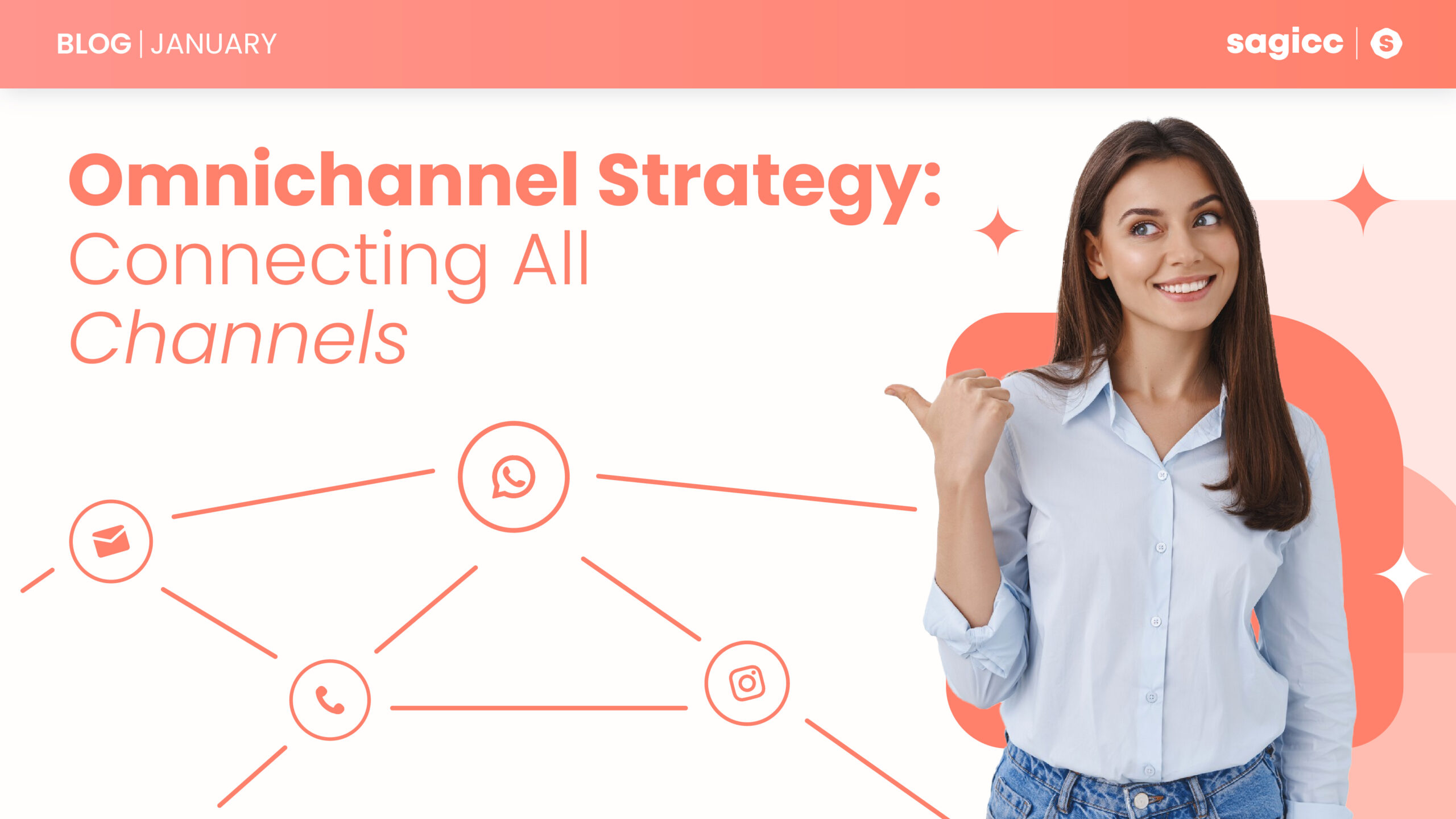In an increasingly digital and connected world, consumer expectations have evolved significantly. Today, customers expect a seamless and consistent experience when interacting with brands, regardless of the channel they choose. To achieve this, companies must adopt an omnichannel strategy that enables them to provide unified, personalized, and consistent service across all touchpoints.
Implementing an omnichannel strategy is not just a trend but a necessity for businesses looking to remain competitive and enhance customer experience. In this blog, we will explore in detail what an omnichannel strategy is, why it is important, and how you can implement it in your business to provide exceptional service and improve customer loyalty.
What Is an Omnichannel Strategy?
An omnichannel strategy refers to the integration of all communication and sales channels of a company, creating a unified customer experience. These channels may include physical stores, websites, mobile apps, social media, email, live chat, phone calls, and more.
Unlike a multichannel strategy, which offers multiple disconnected channels, omnichannel ensures that customers can interact with the company seamlessly and consistently across all channels. This means that if a customer starts a conversation on the company’s website, they can continue it later via WhatsApp or in a physical store without having to repeat information or experience service disruptions.
Benefits of an Omnichannel Strategy
Implementing an omnichannel strategy in your company provides numerous benefits for both your organization and your customers. Some key benefits include:
1. Improved Customer Experience
An omnichannel experience ensures that customers receive faster, more personalized, and more consistent service. Consumers expect brands to be available across multiple touchpoints, but what they truly value is consistency. From their initial interaction with your company to the completion of their purchase or inquiry, everything should be aligned.
2. Increased Customer Loyalty
An omnichannel strategy strengthens the relationship between your company and your customers. By offering more convenient and accessible service, customers are more likely to remain loyal to your brand. A satisfying experience can turn an occasional customer into a brand advocate.
3. Enhanced Operational Efficiency
By integrating communication channels and management platforms, duplicate efforts and inefficiencies are reduced. Staff can access a unified database, allowing them to handle requests faster and more efficiently. Additionally, automated systems can reduce operational workload by managing repetitive tasks such as sending automatic responses or reminders.
4. Greater Analytical Capabilities
An omnichannel strategy also allows companies to collect and analyze data from all customer interactions across different channels. This information can be used to personalize marketing campaigns, improve services, and better understand customer needs and expectations.
Read also: “The changes in customer experience (CX) across different digital communication channels”
Steps to Implement an Omnichannel Strategy in Your Business
Implementing an omnichannel strategy is not an easy task, but with the right steps and tools, you can achieve it efficiently. Here’s how to do it:
1. Know Your Customer
The first step in implementing an omnichannel strategy is understanding your customers and their behaviors. Research which channels they use to interact with your brand, how they prefer to communicate, and what their expectations are.
Recommended Action: Conduct surveys, interviews, and behavior analysis to identify the most used channels and communication preferences. You can use web analytics tools or a CRM to obtain detailed customer interaction data.
2. Select the Right Communication Channels
Based on the data collected from your customers, select the most relevant channels for your business. Some of the most common channels include:
- Social media (Facebook, Instagram, Twitter, LinkedIn, etc.)
- WhatsApp, Telegram, and other instant messaging platforms
- Phone calls
- Live chat on the website
- Physical stores
It’s important to consider not only traditional communication channels but also new messaging platforms and self-service channels.
3. Integrate Communication Channels
Once you’ve selected the channels, the next step is to integrate them into a single platform. This will allow your customer service team to access all customer information, regardless of the communication channel used.
Recommended Action: Use an omnichannel platform like Sagicc, which integrates all channels in one place, enabling more efficient and consistent service. With Sagicc, you can manage interactions through WhatsApp, social media, emails, and more, centralizing all communication.
4. Implement Automation Tools
Automation is a key component of any successful omnichannel strategy. Automation tools, such as chatbots, can help manage frequent customer inquiries, such as business hours, product availability, or order status. This not only improves operational efficiency but also ensures fast and consistent customer service, even outside business hours.
Recommended Action: Implement smart bots that can handle simple and repetitive tasks and provide quick responses. Automation systems can also track sales and remind customers about abandoned carts or pending payments.
5. Train Your Customer Service Team
The success of an omnichannel strategy largely depends on the quality of customer service. Ensure that your team is well-trained to handle interactions across all communication channels smoothly and consistently. This includes providing them with tools to access complete customer information and improve efficiency in problem resolution.
Recommended Action: Provide continuous training to your team so they can become familiar with omnichannel platforms and learn how to personalize interactions based on customer preferences.
6. Measure and Continuously Improve
Finally, it is crucial to measure the performance of your omnichannel strategy. Analyze key metrics such as response time, customer satisfaction, number of interactions per channel, and conversion rates. Use this data to make continuous improvements and optimize the customer experience.
Recommended Action: Implement analytics and measurement tools to monitor customer interactions and adjust your strategy based on the results.
Implementing an omnichannel strategy is not just a trend but a necessity for businesses looking to deliver an exceptional customer experience. By integrating all your communication channels, automating processes, and training your team, you can provide more efficient, consistent, and personalized service. This not only improves customer satisfaction but also optimizes your operations and strengthens long-term loyalty.
With tools like Sagicc, your company can easily implement an effective omnichannel strategy, ensuring a seamless experience across all touchpoints and making every customer interaction memorable and successful.
Don’t underestimate the power of a well-executed omnichannel experience. Start transforming the way you interact with your customers today and get ready to take your business to the next level.
Want to learn more about Sagicc and its omnichannel solutions? Click here.



